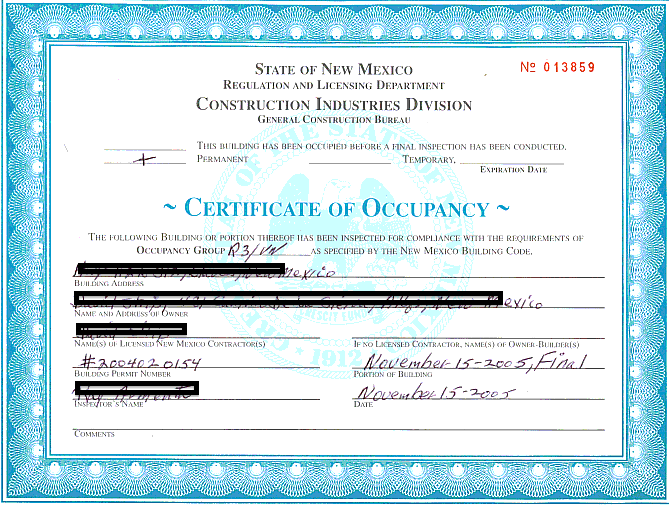 Many modern building codes incorporate accessibility requirements that parallel or even exceed the requirements of the FHA and ADA. In fact, the regulations implementing the accessibility provisions of the Fair Housing Act identify as safe harbors the provisions of several versions of the International Building Code. It is hardly surprising then that property owners and contractors believe that getting a certificate of occupancy means the building complies with the FHA or ADA. Nonetheless, getting a C.O. is no guarantee of compliance with the law and no proof against litigation. The reasons are largely practical, but there is a legal dimension as well when it comes to placing the blame for a failure to comply.
Many modern building codes incorporate accessibility requirements that parallel or even exceed the requirements of the FHA and ADA. In fact, the regulations implementing the accessibility provisions of the Fair Housing Act identify as safe harbors the provisions of several versions of the International Building Code. It is hardly surprising then that property owners and contractors believe that getting a certificate of occupancy means the building complies with the FHA or ADA. Nonetheless, getting a C.O. is no guarantee of compliance with the law and no proof against litigation. The reasons are largely practical, but there is a legal dimension as well when it comes to placing the blame for a failure to comply.
A code inspection cannot be relied on as a practical matter in part because ADA and FHA compliance is complicated. Experts in ADA and FHA compliance sometimes disagree on whether individual features comply, and the sheer number of rules makes it likely that something will be overlooked. This is probably true of every aspect of any building code, but the requirements of the ADA and FHA differ from other codes because violations can lead to litigation even when there has not been any obvious harm. A tenant who finds that some electrical outlets have reversed polarity can’t sue his landlord unless some harm occurs as a result. On the other hand, a person in a wheelchair who merely sees a doorway that isn’t wide enough is considered to have suffered an injury sufficient to justify an ADA or FHA complaint. Perfection is unlikely in any aspect of construction, but the ADA and FHA require perfection; at least in the eyes of many federal judges.
The legal aspect concerns the obligation of a state or city to enforce its own ordinances, and the absence of any remedy if they fail to. Courts seem to agree that a municipality does not itself violate the ADA merely by issuing permits for private buildings that do not comply with the FHA or ADA. As explained in Alford v. City of Cannon Beach, 2000 WL 33200554 (D. Or. 2000), “an argument that the City must force third party licensees or permittees to build compliant structures” cannot be sustained. Careful inspections for compliance with accessibility provisions in a building code are good government, but they are not required the accessibility provisions of the FHA and ADA.
Municipal governments can also avoid liability to the building owner. Apart from any statutory protections they may have, the ADA and FHA have been almost universally held to preempt any kind of claim for indemnity in accessibility lawsuits. (See my blogs of December 30, 2013 and November 13, 2012). As a result, a city that fails to find accessibility violations in the course of a building inspection cannot be sued directly by a person with a disability or based on indemnity by a property owner who is the subject of an accessibility lawsuit.
Finally, it is worth noting that in 1999 Congress declined to pass a bill that would have precluded FHA liability for buildings that had been issued certificates of occupancy. See, discussion in the dissent in Garcia v. Brockway, 526 F.3d 456, 476-477 (9th Cir. 2008). Any argument that having a certificate of occupancy should be a defense to a claim under the ADA or FHA is almost certainly futile in light of that legislative history.
Whether you are building a new facility or buying an older one, the fact that local building codes are supposed to insure accessibility cannot provide any comfort with respect to the prospect of a lawsuit under the FHA or ADA. A certificate of occupancy isn’t proof of accessibility, and it won’t provide a defense in a lawsuit. The best proof against litigation is an accessibility study by a person with the appropriate expertise and certification.

